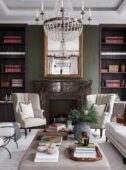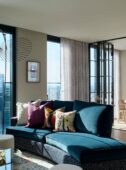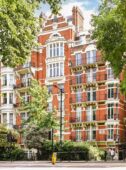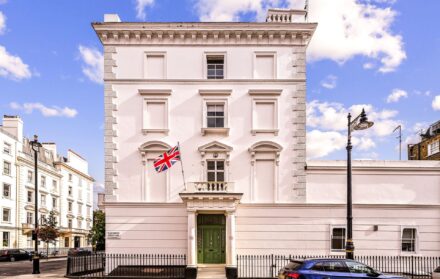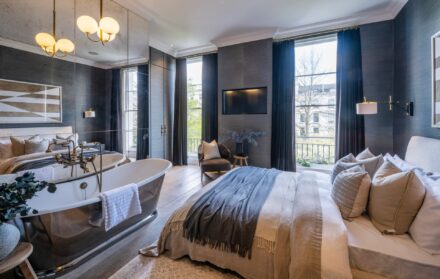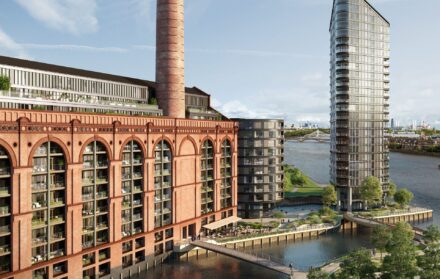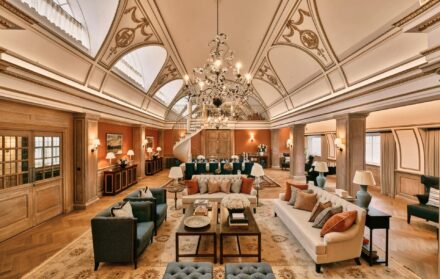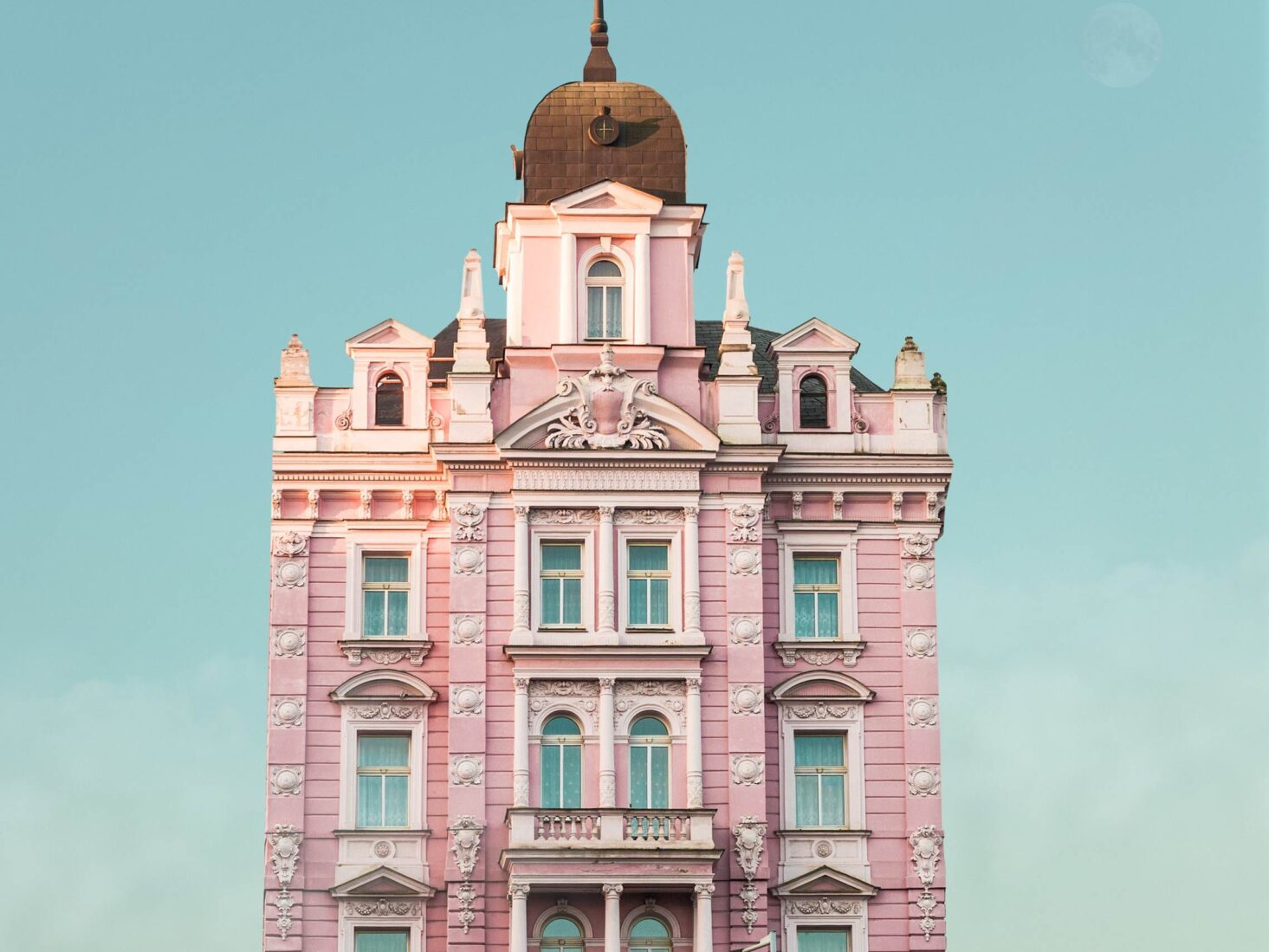
The most Accidentally Wes Anderson locations in the world
Playful and preppy, pastel-washed and colour-popped; as a new book explores Wes Anderson’s idiosyncratic aesthetic, Luxury London considers how the exaggerated, uber-stylised sets of the director’s visual-led films are influencing our interior design choice
Despite the fact that I was 11 years too young to watch Top Gun when it was released in cinemas – and the chances of me being a fan of the film seem as unlikely as an MiG aircraft performing an inverted manoeuvre – its hit songs are the soundtrack to my childhood.
Sittin’ on the Dock of the Bay, Take My Breath Away, Great Balls of Fire – I belted them out with my dad at top volume in the car decades before I actually watched the film and realised I knew every song. Why? Because the Top Gun album is “a quintessential artefact of the mid-80s,” declares Allmusic.com, “which still defines the bombastic, melodramatic sound that dominated the pop charts of the era”.

From sing-a-long soundtracks and pitch-perfect quotes to costumes that popped up on catwalks and hair styles we loved – then regretted – the world that a director creates has the potential to seep out of the screen and influence every corner of popular culture, from food and drink to cars, clothes and interior design.
A straw poll among friends serves up an eclectic series of favourite sets, spanning decades and genres, from the indisputably cool to the downright questionable (and I won’t say which are mine). The diner in Pulp Fiction. The Ferrari garage in Ferris Bueller’s Day Off. The loft apartment in Legal Eagles. The houses in High Society, The Talented Mr. Ripley, Parasite and Something’s Gotta Give. Willy Wonka’s chocolate factory. The Grand Budapest Hotel. And that wardrobe from Clueless in the 90s (which everyone I know wanted). Days later, the messages keep coming – dwelling on a dream, film-inspired homes are apparently rather irresistible.

But what works on a film set is unlikely to work in our homes – in the absence of a Hollywood-sized budgets, the decadent glamour of The Great Gatsby or the ethereal Elven domains of The Lord of the Rings cannot be recreated in a London flat, no matter how persuasively the estate agent pitches it. There is, however, a director whose productions have not only captured our imaginations but are also ripe for the picking when it comes to interiors inspiration.
“People say they can tell in 10 seconds that a film is by me,” says Wes Anderson, director of films including The Royal Tenenbaums, The Grand Budapest Hotel, Isle of Dogs and Moonrise Kingdom, such is his unwavering commitment to obscure colour palettes, pastel dreamscapes, front-on façades and faded grandeur. This immediately identifiable niche has won him legions of fans – not just on the film front but across fashion, design and décor.
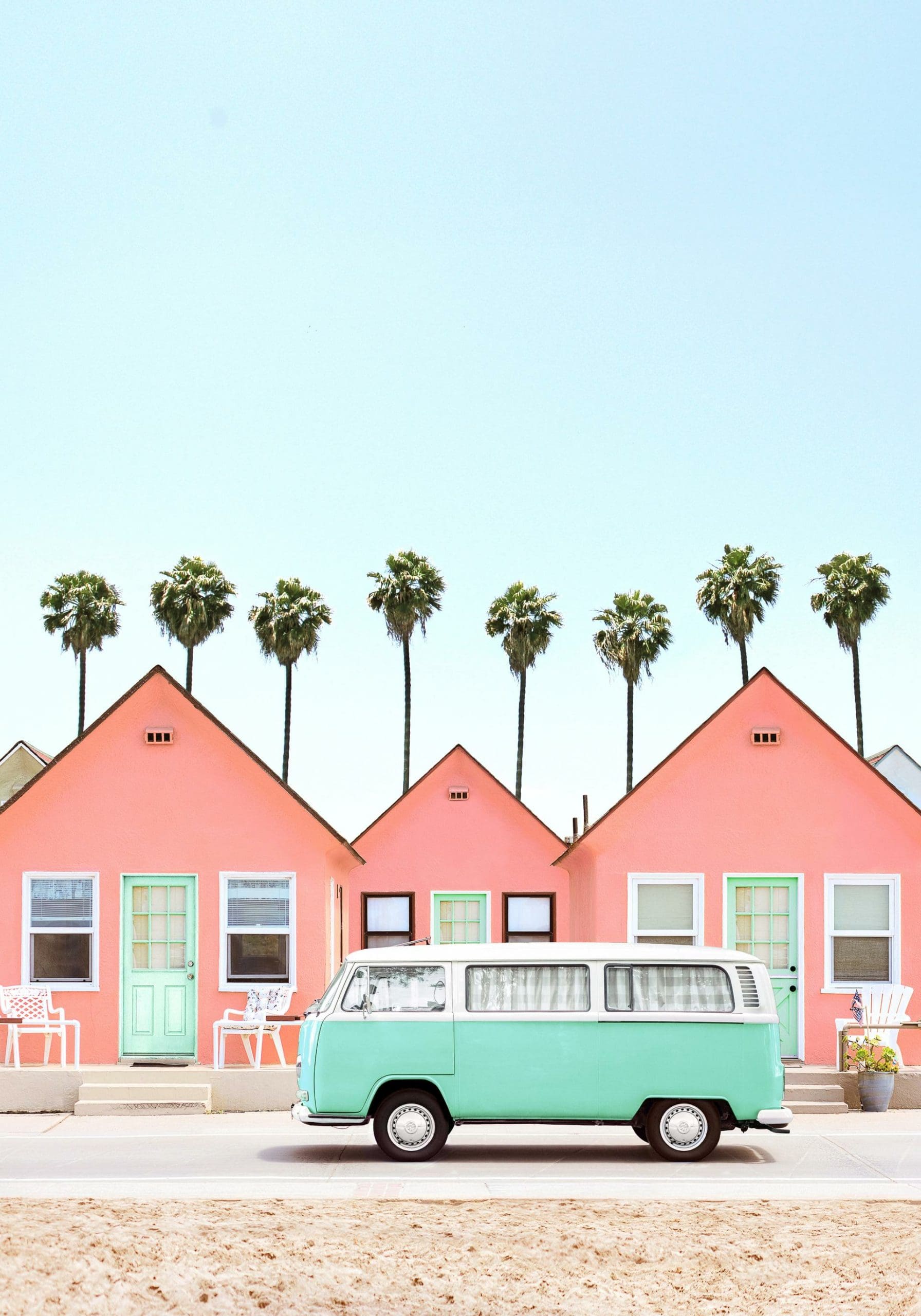
Some 1.2million fans follow @accidentallywesanderson, an Instagram account that collates locations with the “vivid, unique, and meticulously constructed” aesthetic of a Wes Anderson film. It’s so on brand for Instagram that the company has even named a room in its New York office after it.
AWA’s popularity – founder Wally Koval receives about 3,000 submissions a month – has resulted in a fantastical tome of real-world places with an other-worldly feel, “capturing the symmetrical, the atypical, the unexpected, the vibrantly patterned, and distinctively coloured in arresting photographs from around the world”. And the filmmaker himself wrote the foreword – quite the endorsement.

“It’s about taking one step to the left,” Koval explained, “and a quarter turn, then a place takes on an entirely new look – maybe the light is hitting it just right or a cloud behind has just popped. I find that moment every single day.” London hotspots worthy of a square on Koval’s grid are Sketch, with its bubble-gum pink dining room, The Blue Bar at The Berkeley, with its 50 shades of blue, and Lina Stores’ King’s Cross restaurant and deli, with a mint green hue that saturates bar stools and banquette seating.
What’s so brilliant about the world of Wes, says a friend who adores his sets, is that “they’re timeless, in that they feel like they are from another era, but also modern – which makes them easy to take ideas from”, as Accidentally Wes Anderson so deftly conveys.

Start with colour; choose a distinctive palette, and use it everywhere. Take your time to find objects both everyday and statement – Anderson is said to handpick every single item featured in a set – and delight in furniture that is vintage, outlandish, elegant and quirky. Eccentric, bold wallpaper and framed prints or photographs – the odder the better – are an easy way to add the Wes effect to any room, big or small. If in doubt; add a record player.
The family home in The Royal Tenenbaums boasts a portrait-lined ballroom, an indoor phone booth, chandeliers, a roll-top bath and zebra-print wallpaper – a meticulously planned blend of both familiar and fantastical. “That’s the kind of movie that I like to make, where there is an invented reality and the audience is going to go someplace where hopefully they’ve never been before. The details – that’s what the world is made of.” After the year we’ve had, a world – and home – according to Wes Anderson is one I’d happily inhabit.
Accidentally Wes Anderson by Wally Koval is out now, £25, published by Trapeze, accidentallywesanderson.com
